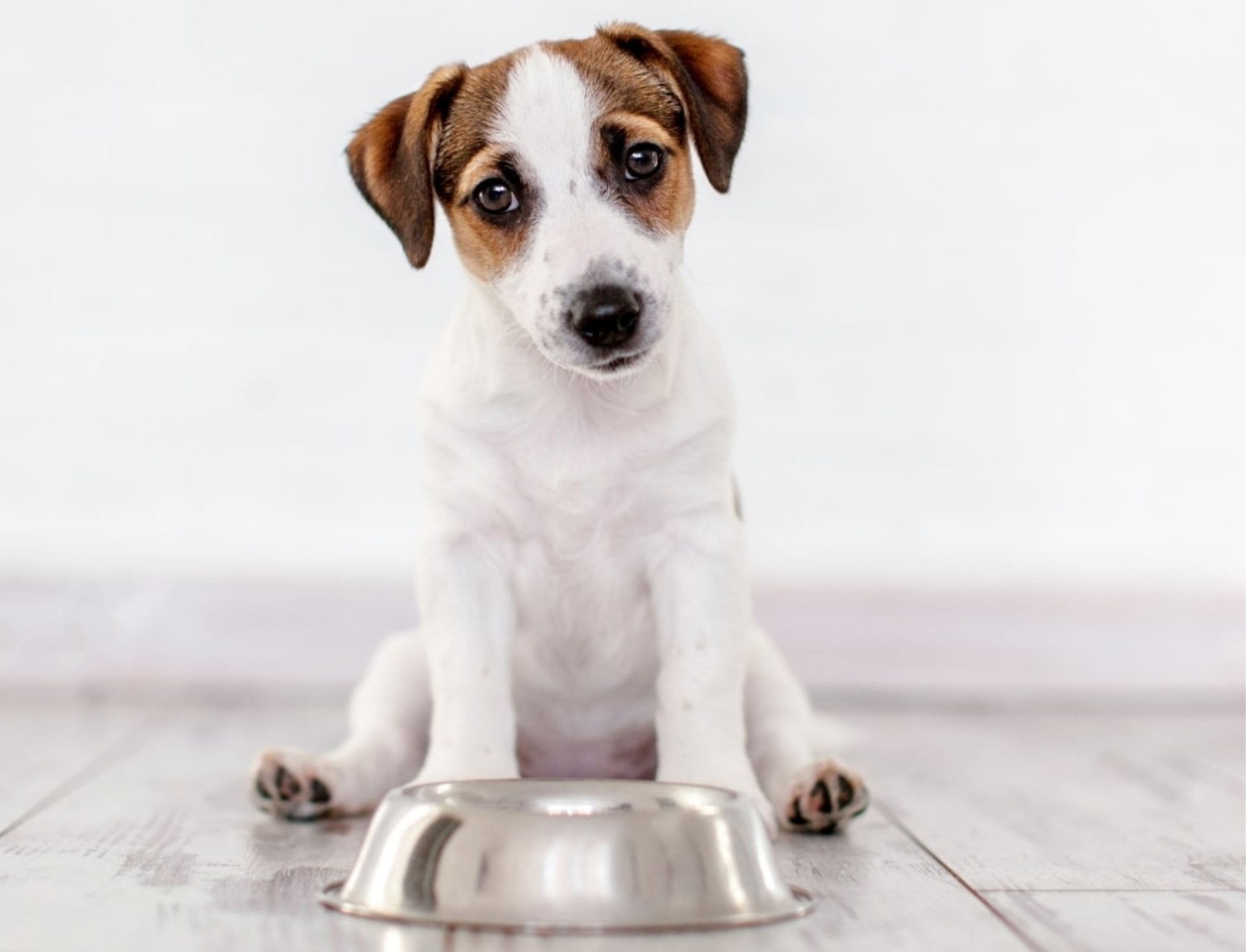Your Cart is Empty
Get Up To 35% OFF & Free Delivery
Get Up To 35% OFF & Free Delivery
Get Up To 35% OFF & Free Delivery

Welcome to the wonderful world of puppy food. Choosing what to feed your pup can feel like a maze of decisions. How much food should I be feeding my puppy? What kind of puppy food is best? How many times a day should I feed my puppy?
We are here to answer all these questions, and more, to help you keep your little Fido’s tummy happy and give them the best start in life.
Let’s jump right into the puppy feeding guide, with the number one rule to follow: all puppies are different. Learning to understand your canine companion’s needs and preferences, as well as how they look and feel on certain foods, will ultimately be the best way to determine what works best.
So here’s a handy guideline, to get you started on your journey to discovering the perfect puppy food for your growing pooch... and you!
Before your puppy comes to you, they will have started life on their mother’s milk, before transitioning onto solid food from around 4 weeks old. By 6 weeks, most puppies are fully weaned and ready to come home with you soon after!
Puppies will be weaned onto dog food that is specifically formed for puppies. This is because these foods are high in the specific nutrients essential for the first year of your pup’s development, created to help your pup’s musculoskeletal health be the best it can be. So don’t be hasty on jumping into adult food right away!
Follow the timeline below to give your pooch the best start:
6–12 weeks: Feed 4 times a day.
3–6 months: Slowly decrease feedings from 4 to 3 times a day.
6–12 months: Transition slowly to feeding 2 times a day.
From maturity: Most owners choose to transition to adult food, fed in 2 half portions a day.
It’s a good idea to feed at regular times in regular amounts, and don’t leave food down for long stretches of time. 10 - 20 minutes should do the trick.
Puppy food is nutrient-dense, meaning it could lead to excessive weight gain for adult or mature dogs. For this reason, it’s important to transition away from puppy food at the right time, to balance a strong start with keeping your pooch at a healthy weight.
Some owners choose to make the transition to adult food after spaying or neutering their pups, as this lowers their energy requirements slightly.
Smaller pooches, like toy breeds, can usually start to make the switch between 7 to 9 months. Larger breeds, like your Danes or Shepherds, need to wait until 12 to 14 months.
If in doubt? Always err on the side of caution. It’s much better to keep a growing puppy healthy than to make the switch too soon. Unsure when your dog’s breed hits maturity? Ask your vet to advise on when your pup is ready for the grown-up dinner table.
If you want to change your pup’s food when they come home with you, do so slowly. To avoid upsetting their little stomachs, it’s important to slowly transition them from your breeder’s diet to a new diet over a period of weeks.
To start making decisions about the kind of diet you want for your baby doggo, first think about their unique characteristics. Are they toy-sized, medium-sized, or mahoosive? Are they an active breed or a sloth in dog form? These factors will all affect both the content and quantity of feed you should be aiming for.
It’s always wise to consult your vet, who can help you to understand what type of nutrients and ingredients your individual puppy needs. Certain breeds can experience a predisposition for certain health-related issues, weight gain, or hyperactivity - all of which can often be managed with the correct food type.
Your vet will usually suggest using food that complies with The Association of American Feed Control. This official body sets nutrient guidelines, so always check the package label for ‘AAFCO approved’.
Ideally, the ingredients on these packages should be made up of easily identifiable whole foods and supplements, rather than lots of ‘fillers’. Corn, for example, is often used as a pet food filler and can cause issues for sensitive stomachs. Food with lots of fillers is the doggo version of fast food - cheap & filling, but not the best nutritionally!
Purchasing food from companies that employ veterinary nutritionists and other experts to formulate the recipes is also a good bet.
Some owners choose to opt for a homemade diet. While this gives you control over what goes into the food, bear in mind it can be time-consuming and still miss essential nutrients. So if you want to become your pup’s private chef, be sure to check in with your vet and do your research first.
Dry food and wet both have pros and cons.
Dry food is often more convenient. It travels well, has less odor & lasts longer than wet food. However, its higher preservative content can put some owners off. Wet food may be fresher and easy to ingest due to its high water content, but it’s far more perishable - making it less convenient for a busy owner or those on the road with their canine pals.
Raw diets have grown in popularity, due to anecdotal evidence of their benefits to many dogs’ conditions and wellbeing. However, as it stands, there’s very little scientific evidence of its nutritional benefits. Plus, there’s a heap of associated risks with raw feeding, including reviews that highlight cases of fatal salmonella!
So if it’s something you feel your puppy might benefit from, definitely discuss it with your vet first.
No matter what food option you go with, always remember that your dog is a great indicator of how their food is affecting them. Is your pup bright-eyed, energetic, and producing healthy firm poops? Are they starting to grow into a lean, mean walking machine and losing their puppy rolls? In which case, you are on the right track.
To start with, either take your vet’s recommendation or use the calorie feeding guidelines printed on your puppy’s food bag. However, it can also be best to go by eye to determine the right portion size for your dog.
Watch your puppy’s body condition as they grow. Your little roly-poly should be losing a little of their pudginess by 12 weeks. If that puppy pudge is hanging around for a little too long, it could be a sign they are in fact eating too much. Take treats into account with your calorie counting too, as these can add up!
Your puppy feeding and potty schedule go hand in hand. It’s always wise to let your dog out shortly after eating, to start that potty training off on the right track.
Allow your pup to digest for a few minutes, then take them for a walk, or some outdoor play to encourage a potty training routine. If you need to feed after a walk, make sure your pup isn’t panting or overly hot when you feed them, as this could lead to an upset stomach.
Take note: treating Fido to an ice cream is a definite no! (Unless it’s a pup-friendly ice cream, of course.)
If your puppy is leaving food in their bowl, it could be that you are simply giving them too much.
However, if they are consistently not eating or losing weight, or you have any other feeding concerns, don’t hesitate to see your vet. That’s what they are there for, after all!
We hope this guide helps you find your way through the maze of puppy food brands out there, to sniff out the best bets for your pooch. With this guide, a little research, and some help from your veterinarian, you are sure to find a puppy food that meets the needs of both you and your pup.
See How Dog Owners Are Using These Leak-Free Potty Pads to Keep Their Homes Clean and Pups Happy
4.7 ⭐⭐⭐⭐⭐
Over 100,000 Dog Owners Saved Money With Potty Buddy™
The washable pee pads that absorb anything your dog throws at them, while keeping your floors and furniture stain-free.
✅ Super Absorbent and Leak-Proof
✅ Great for Potty Training
✅ Ideal for Puppies and Older Dogs
✅ Washable and Reusable For Years
✅ Save over $400/year by not buying disposables
-60 Day Money Back Guarantee-

⭐⭐⭐⭐⭐
-Diana D.
These pads are a life saver for my kitchen floor and bedroom carpet! Just ordered 2 more!




Check Out Our Most Popular Content